 W
WAn arch bridge is a bridge with abutments at each end shaped as a curved arch. Arch bridges work by transferring the weight of the bridge and its loads partially into a horizontal thrust restrained by the abutments at either side. A viaduct may be made from a series of arches, although other more economical structures are typically used today.
 W
WA bascule bridge is a moveable bridge with a counterweight that continuously balances a span, or leaf, throughout its upward swing to provide clearance for boat traffic. It may be single- or double-leafed.
 W
WBeam bridges, also known as stringer bridges, are the simplest structural forms for bridge spans supported by an abutment or pier at each end. No moments are transferred throughout the support, hence their structural type is known as simply supported.
 W
WA box girder bridge, or box section bridge, is a bridge in which the main beams comprise girders in the shape of a hollow box. The box girder normally comprises prestressed concrete, structural steel, or a composite of steel and reinforced concrete. The box is typically rectangular or trapezoidal in cross-section. Box girder bridges are commonly used for highway flyovers and for modern elevated structures of light rail transport. Although the box girder bridge is normally a form of beam bridge, box girders may also be used on cable-stayed and other bridges.
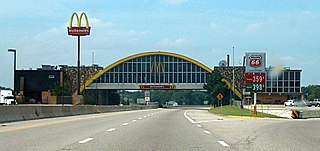 W
WA bridge restaurant or restaurant bridge is a restaurant, usually indoors, built like a bridge over a road, mostly over freeways or motorways. It usually provides access from both sides of the road without the need of crossing the road by tunnel or footbridge. The construction also attracts the attention of motorists, making it easy to find the rest area.
 W
WA cable-stayed bridge has one or more towers, from which cables support the bridge deck. A distinctive feature are the cables or stays, which run directly from the tower to the deck, normally forming a fan-like pattern or a series of parallel lines. This is in contrast to the modern suspension bridge, where the cables supporting the deck are suspended vertically from the main cable, anchored at both ends of the bridge and running between the towers. The cable-stayed bridge is optimal for spans longer than cantilever bridges and shorter than suspension bridges. This is the range within which cantilever bridges would rapidly grow heavier, and suspension bridge cabling would be more costly.
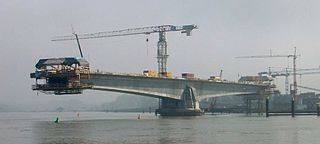 W
WA cantilever bridge is a bridge built using cantilevers, structures that project horizontally into space, supported on only one end. For small footbridges, the cantilevers may be simple beams; however, large cantilever bridges designed to handle road or rail traffic use trusses built from structural steel, or box girders built from prestressed concrete. The steel truss cantilever bridge was a major engineering breakthrough when first put into practice, as it can span distances of over 1,500 feet (460 m), and can be more easily constructed at difficult crossings by virtue of using little or no falsework.
 W
WA cantilever spar cable-stayed bridge is a modern variation of the cable-stayed bridge. This design has been pioneered by the structural engineer Santiago Calatrava in 1992 with the Puente del Alamillo in Seville, Spain. In two of his designs the force distribution does not depend solely upon the cantilever action of the spar (pylon); the angle of the spar away from the bridge and the weight distribution in the spar serve to reduce the overturning forces applied to the footing of the spar. In contrast, in his swinging Puente de la Mujer design (2002), the spar reaches toward the cable supported deck and is counterbalanced by a structural tail. In the Assut de l'Or Bridge (2008), the curved backward pylon is back-stayed to concrete counterweights.
 W
WA covered bridge is a timber-truss bridge with a roof, decking, and siding, which in most covered bridges create an almost complete enclosure. The purpose of the covering is to protect the wooden structural members from the weather. Uncovered wooden bridges typically have a lifespan of only 20 years because of the effects of rain and sun, but a covered bridge could last over 100 years. Once common, only about 1 in 10 survived the 20th century. The relatively small number of surviving bridges is due to deliberate replacement, neglect, and the high cost of restoration.
 W
WCrib bridges were made from horizontally placed logs. The logs were laid first lengthwise, and then crosswise, in several layers. This consumed more trees than building trestle bridges, but they were easier to build without cranes or rams.
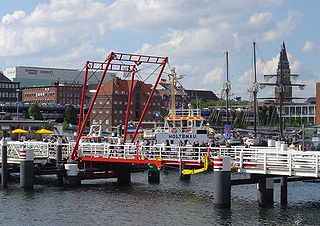 W
WA folding bridge is a type of moveable bridge.
 W
WA girder bridge is a bridge that uses girders as the means of supporting its deck. The two most common types of modern steel girder bridges are plate and box.
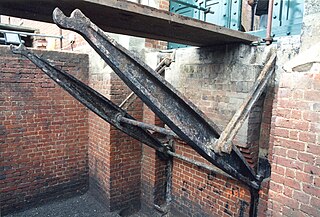 W
WA Guthrie rolling bridge was a kind of retractable bridge, an 18th-century version of the drawbridge. It was commonly installed as the access across the narrow steep sided ditches characteristic of the polygonal forts of this era.
 W
WIncremental launch is a method in civil engineering of building a complete bridge deck from one abutment of the bridge only, manufacturing the superstructure of the bridge by sections to the other side. In current applications, the method is highly mechanised and uses pre-stressed concrete.
 W
WAn integral bridge contains no expansion joints to accommodate enlargement due to increased temperature. Horizontal (axial) movements due to thermal expansion and braking loads are instead transferred to the fill adjacent to the abutment. The omission of the expansion joint removes a pathway for the penetration of chloride-bearing road salts to the bridge's sub-structure. In the United Kingdom there is a presumption that most new short to medium length bridges will be of the integral type.
 W
WA jet bridge is an enclosed, movable connector which most commonly extends from an airport terminal gate to an airplane, and in some instances from a port to a boat or ship, allowing passengers to board and disembark without going outside and being exposed to harsh weather. Depending on building design, sill heights, fueling positions, and operational requirements, a jet bridge may be fixed or movable, swinging radially, and/or extending in length. The jetway was invented by Frank Der Yuen.
 W
WA liana bridge is a suspended bridge made of liana vines. These bridges are most widespread in the tropical climates of Latin America, Africa and South-East Asia.
 W
WA log bridge is a timber bridge that uses logs that fall naturally or are intentionally felled or placed across streams. The first man-made bridges with significant span were probably intentionally felled trees.
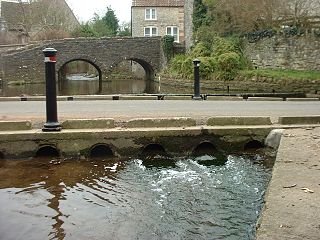 W
WA low-water crossing provides a bridge when water flow is low. Under high-flow conditions, water runs over the roadway and precludes vehicular traffic. This approach is cheaper than building a bridge to raise the level of the road above the highest flood stage of a river, particularly in developing countries or in semi-arid areas with rare high-volume rain. Low-water crossings can be dangerous when flooded.
 W
WA moon bridge (月桥) is a highly-rounded arched pedestrian bridge .The moon bridge originated in China and was later introduced to Japan.
 W
WA moveable bridge, or movable bridge, is a bridge that moves to allow passage for boats or barges. In American English, the term is synonymous with drawbridge, and the latter is the common term, but drawbridge can be limited to the narrower, historical definition used in some other forms of English, in which drawbridge refers to only a specific type of moveable bridge often found in castles.
 W
WNavigable aqueducts are bridge structures that carry navigable waterway canals over other rivers, valleys, railways or roads. They are primarily distinguished by their size, carrying a larger cross-section of water than most water-supply aqueducts. Although Roman aqueducts were sometimes used for transport, aqueducts were not generally used until the 17th century when the problems of summit level canals had been solved and modern canal systems were developed. The 662-metre (2,172 ft) long steel Briare aqueduct carrying the Canal latéral à la Loire over the River Loire was built in 1896. It was ranked as the longest navigable aqueduct in the world for more than a century, until the Magdeburg Water Bridge in Germany took the title in the early 21st century.
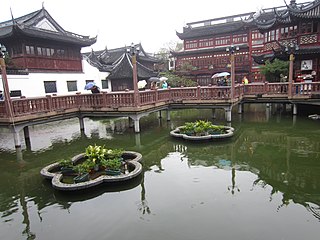 W
WThe Nine-turn bridge or Zigzag bridge is one of the features of Chinese Gardens, where the bridge is designed to turn several times, so one can enjoy viewing different scenes. The bridge is usually made of stones or concrete with decorated guard rails, and the angles of the turns can be at right angles, at any other angle or curved.
 W
WA pile bridge is a structure that uses foundations consisting of long poles, which are made of wood, concrete or steel and which are hammered into the soft soils beneath the bridge until the end of the pile reaches a hard layer of compacted soil or rock. Piles in such cases are hammered to a depth where the grip or friction of the pile and the soil surrounding it will support the load of the bridge deck. Bridging solely using the pile method is a rare occurrence today.
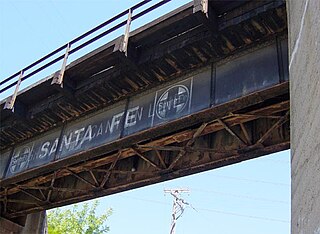 W
WA plate girder bridge is a bridge supported by two or more plate girders.
 W
WA pontoon bridge, also known as a floating bridge, uses floats or shallow-draft boats to support a continuous deck for pedestrian and vehicle travel. The buoyancy of the supports limits the maximum load that they can carry.
 W
WA retractable bridge is a type of moveable bridge in which the deck can be rolled or slid backwards to open a gap while traffic crosses, usually a ship on a waterway. This type is sometimes referred to as a thrust bridge.
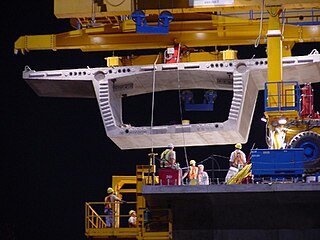 W
WA segmental bridge is a bridge built in short sections, i.e., one piece at a time, as opposed to traditional methods that build a bridge in very large sections. The bridge is made of concrete that is either cast-in-place or precast concrete.
 W
WA self-anchored suspension bridge is a suspension bridge in which the main cables attach to the ends of the deck, rather than to the ground via large anchorages. The design is well-suited for construction atop elevated piers, or in areas of unstable soils where anchorages would be difficult to construct.
 W
WA side-spar cable-stayed bridge may be an otherwise conventional cable-stayed bridge but its cable support does not span the roadway, rather being cantilevered from one side. The Esplanade Riel illustrated is located in Winnipeg, Manitoba, Canada. This bridge is intended for pedestrian use only and has a restaurant in its base.
 W
WA simple suspension bridge is a primitive type of bridge in which the deck of the bridge lies on two parallel load-bearing cables that are anchored at either end. They have no towers or piers. The cables follow a shallow downward catenary arc which moves in response to dynamic loads on the bridge deck.
 W
WA stressed ribbon bridge is a tension structure. The suspension cables are embedded in the deck which follows a catenary arc between supports. Unlike the simple span, the ribbon is stressed in traction, which adds to the stiffness of the structure. The supports in turn support upward thrusting arcs that allow the grade to be changed between spans. Such bridges are typically made from concrete reinforced by steel tensioning cables. Where such bridges carry vehicle traffic a certain degree of stiffness is required to prevent excessive flexure of the structure, obtained by stressing the concrete in compression.
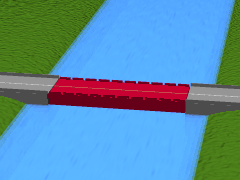 W
WA submersible bridge is a type of movable bridge that lowers the bridge deck below the water level to permit waterborne traffic to use the waterway. This differs from a lift bridge or table bridge, which operate by raising the roadway. Two submersible bridges exist across the Corinth Canal in Greece, one at each end, in Isthmia and Corinth. They lower the centre span to 8 metres below water level when they give way to ships crossing the channel.
 W
WA floating suspension bridge is a type of suspension bridge supported by towers built on floating pontoons which are tethered to the seabed. The design is intended to overcome the difficulties of building suspension towers in locations where the water is particularly deep. As of 2021 no such bridges have been built, but a project is underway to build one in Norway, at Bjørnafjord, designed by engineer Ian Firth.
 W
WA suspension bridge is a type of bridge in which the deck is hung below suspension cables on vertical suspenders. The first modern examples of this type of bridge were built in the early 1800s. Simple suspension bridges, which lack vertical suspenders, have a long history in many mountainous parts of the world.
 W
WA swing bridge is a movable bridge that has as its primary structural support a vertical locating pin and support ring, usually at or near to its center of gravity, about which the turning span can then pivot horizontally as shown in the animated illustration to the right. Small swing bridges as found over canals may be pivoted only at one end, opening as would a gate, but require substantial underground structure to support the pivot.
 W
WA table bridge is a moveable bridge in which the deck moves along the vertical axis. Four hydraulic pillars under the bridge, two at each end, raise the bridge deck to allow barge traffic to pass beneath it. In contrast to a lift bridge, where the deck is pulled upwards along towers, the deck of a table bridge is pushed upwards by otherwise hidden pillars. The name originates from the fact that when open it resembles a table.
 W
WA through arch bridge, also known as a half-through arch bridge or a through-type arch bridge, is a bridge that is made from materials such as steel or reinforced concrete, in which the base of an arch structure is below the deck but the top rises above it. It can either be lower bearing or mid-bearing. Thus, the deck is within the arch, and cables or beams that are in tension suspend the central part of the deck from the arch.
 W
WA tilt bridge is a type of moveable bridge which rotates about fixed endpoints rather than lifting or bending, as with a drawbridge. The tilting Gateshead Millennium Bridge spanning the River Tyne between Gateshead on the south bank and Newcastle upon Tyne, England, on the north is a pedestrian bridge with two large hydraulic rams at each side that tilt the structure back allowing small watercraft to pass under.
 W
WA transporter bridge, also known as a ferry bridge or aerial transfer bridge, is a type of movable bridge that carries a segment of roadway across a river. The gondola is slung from a tall span by wires or a metal frame. The design has been used to cross navigable rivers or other bodies of water, where there is a requirement for ship traffic to be able to pass. This has been a rare type of bridge, with fewer than two dozen built. There are just twelve that continue to be used today, including one converted into a lift bridge and one designed as, but not yet operating as, a transporter bridge.
 W
WA trestle bridge is a bridge composed of a number of short spans supported by closely spaced frames. A trestle is a rigid frame used as a support, historically a tripod used to support a stool or a pair of isosceles triangles joined at their apices by a plank or beam such as the support structure for a trestle table. Each supporting frame is a bent. A trestle differs from a viaduct in that viaducts have towers that support much longer spans and typically have a higher elevation.
 W
WA truss bridge is a bridge whose load-bearing superstructure is composed of a truss, a structure of connected elements, usually forming triangular units. The connected elements may be stressed from tension, compression, or sometimes both in response to dynamic loads. The basic types of truss bridges shown in this article have simple designs which could be easily analyzed by 19th and early 20th-century engineers. A truss bridge is economical to construct because it uses materials efficiently.
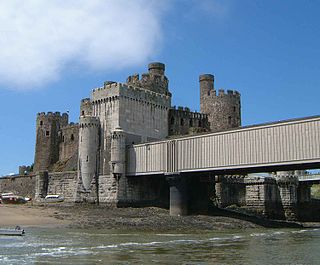 W
WA tubular bridge is a bridge built as a rigid box girder section within which the traffic is carried. Famous examples include the original Britannia Bridge over the Menai Strait, the Conwy railway bridge over the River Conwy, designed and tested by William Fairbairn and built by Robert Stephenson between 1846 and 1850, and the original Victoria Bridge in Montreal.
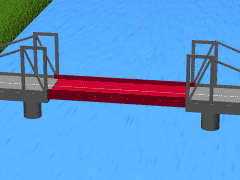 W
WA vertical-lift bridge or just lift bridge is a type of movable bridge in which a span rises vertically while remaining parallel with the deck.
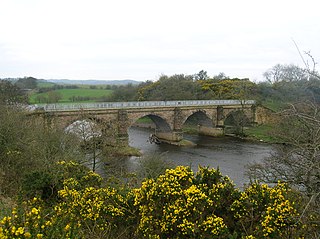 W
WA viaduct is a specific type of bridge that consists of a series of arches, piers or columns supporting a long elevated railway or road. Typically a viaduct connects two points of roughly equal elevation, allowing direct overpass across a wide valley, road, river, or other low-lying terrain features and obstacles. The term viaduct is derived from the Latin via meaning "road", and ducere meaning "to lead". It is a 19th-century derivation from an analogy with ancient Roman aqueducts. Like the Roman aqueducts, many early viaducts comprised a series of arches of roughly equal length.
 W
WVlotbrug translates from Dutch into English as "float bridge". In its broadest sense, it includes pontoon bridges. In a narrower sense, it includes floating swing bridges which pivot either centrally or from one or both banks of a body of water to allow vessels to pass through.